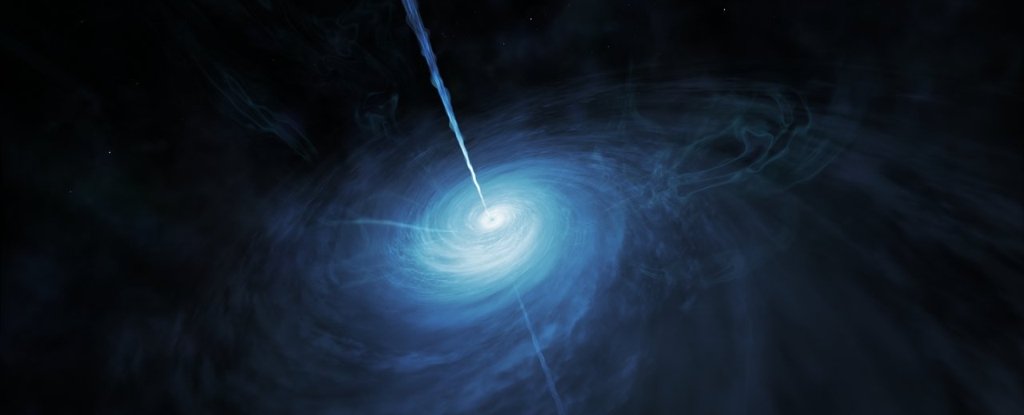Products You May Like
As we gain greater ability to peer deeper and deeper into the Universe, we’ve been finding something very surprising: Supermassive black holes millions to billions of times the mass of the Sun, before the Universe was even 10 percent of its current age.
This is quite the cosmological conundrum. Given what we know about the growth rate of black holes, there oughtn’t have been enough time since the Big Bang for them to grow so huge. But their presence is undeniable – so something strange must be afoot.
According to new research, that something might be one of the strangest things in the Universe: dark matter.
“We can think of two reasons [why the early Universe black holes are so massive],” said physicist and astronomer Hai-Bo Yu of the University of California Riverside.
“The seed – or ‘baby’ – black hole is either much more massive, or it grows much faster than we thought, or both. The question that then arises is what are the physical mechanisms for producing a massive enough seed black hole or achieving a fast enough growth rate?”
Dark matter is one of the Universe’s greatest mysteries. We don’t know what it is, or what it’s made of. The only way it interacts with the normal baryonic matter in the Universe – that’s the stuff that all the stuff we can see is made of – is gravitationally.
Because it interacts gravitationally, we can observe gravitational effects in the Universe, such as the rotation of galaxies and the way light curves along a strong gravitational field, and subtract the gravitational effect of normal matter to determine dark matter content. And there’s a lot of it. An estimated 85 percent of all the matter in the Universe is dark matter.
Most galaxies reside in a halo of dark matter; it’s thought to be vital for their formation. One model for the formation of supermassive black holes is the direct collapse of a dense cloud of gas. Yu and his colleagues wondered if there might be another contribution.
“This mechanism … cannot produce a massive enough seed black hole to accommodate newly observed supermassive black holes – unless the seed black hole experienced an extremely fast growth rate,” Yu said.
“Our work provides an alternative explanation: A self-interacting dark matter halo experiences gravothermal instability and its central region collapses into a seed black hole.”
As far as we can tell so far, dark matter only interacts with baryonic matter gravitationally, but it may be able to interact with itself.
The team’s scenario starts with the formation of just such a dark matter halo, coming together gravitationally in the early Universe. The inward pull of gravity would compete against the outward push of heat and pressure; for non-self-interacting dark matter, particles condensing towards the center of the halo would speed up under the increasing gravity, and recoil under the higher pressure, because they were unable to transfer their energy to other particles.
Self-interacting dark matter particles, however, would be able to transfer energy to other particles, introducing friction to the rotating dark matter fluid. This would cause the particles to slow, reducing angular momentum and shrinking the central halo so that, eventually, it would collapse under its own mass to form the seed of a black hole.
From this point, the seed could grow by accreting baryonic matter, the researchers said. And, while the dark matter ‘seed’ can have a high enough mass to allow the black hole to grow quickly, both forms of matter are required.
“In many galaxies, stars and gas dominate their central regions,” Yu explained.
“Thus, it’s natural to ask how the presence of this baryonic matter affects the collapse process. We show it will speed up the onset of the collapse. This feature is exactly what we need to explain the origin of supermassive black holes in the early universe. The self-interactions also lead to viscosity that can dissipate angular momentum of the central halo and further help the collapse process.”
The team hopes that future instruments, even more sensitive, will be able to locate early Universe galaxies with a range of brightnesses outside the capabilities of our current telescopes.
This should be able to help validate their model, a result that wouldn’t just help us solve the problem of early Universe supermassive black holes, but the mysterious nature of dark matter.
The research has been published in The Astrophysical Journal Letters.
